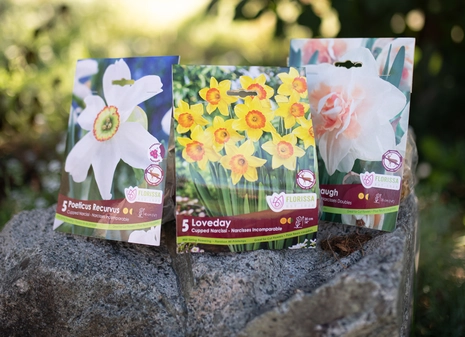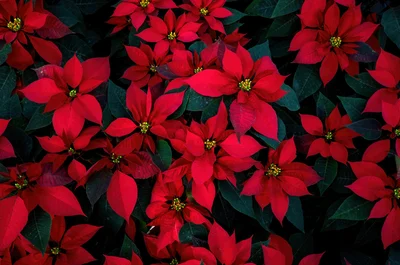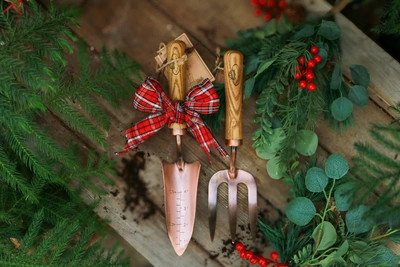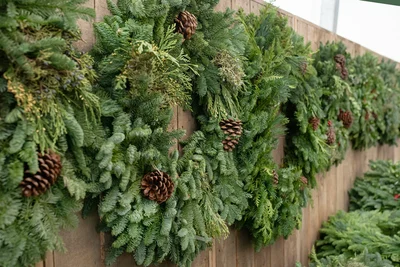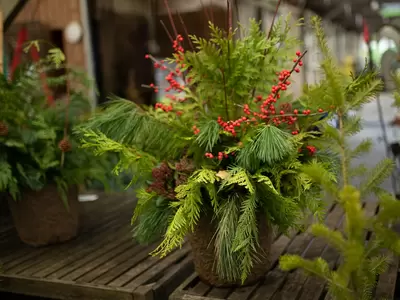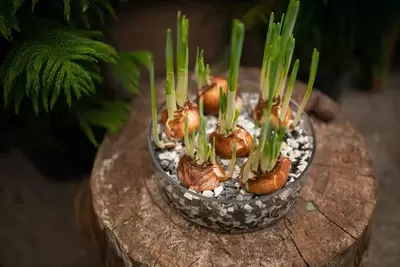
Written by Ingrid Hoff
Growing bulbs indoors? Yes it can be done through a process often called forcing, but don’t be alarmed, we aren’t going to get rough with any spring blooming flowers.
Simply put, forcing bulbs is the process of convincing them to bloom early by making the bulbs think they have been through winter and it is now spring time. This is done by chilling the bulbs for a specific amount of time.
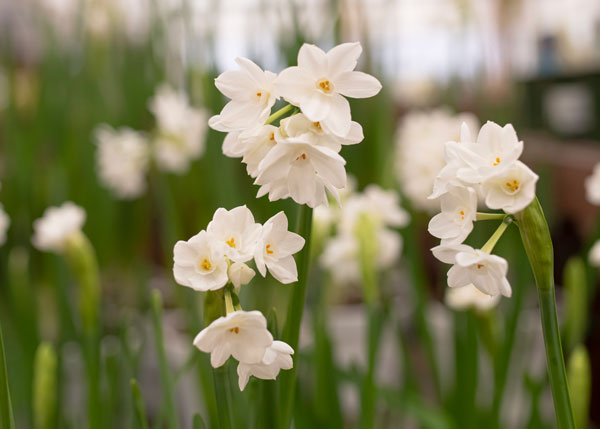
Explore Indoor Blooming Favourites:
Paperwhites
With elegant, pure white clusters of sweetly scented flowers these might arguably be the most popular bulbs for growing indoors. They are also amazingly easy to care for, in fact, they don’t even need soil! Paperwhites can be grown in just water (with a bit of gravel or rocks for stability). If you have kids, this is a great project for them to see the roots forming. These versatile bulbs offer many possibilities and creative ways to grow.
A popular method involves using a tall glass cylinder vase. Just fill the bottom of the vase with some rounded pebbles then nestle the bulbs into the pebbles. Add water up the lower third of the bulb, never submerge the bulbs since that equals rotten bulbs, and watch them grow. This method of growing paperwhites has a few advantages such as the vase keeps the leaves contained and the pebbles weigh the whole thing down so you don’t have any issues with toppling.
You can also plant paperwhites in soil and they will grow just as well. Just keep in mind the container should be sturdy enough and have drainage holes. Then get creative, add a finishing touch of moss to cover the soil, add some twigs to prop the leaves up, or tie the growing shoots up with a festive golden ribbon.
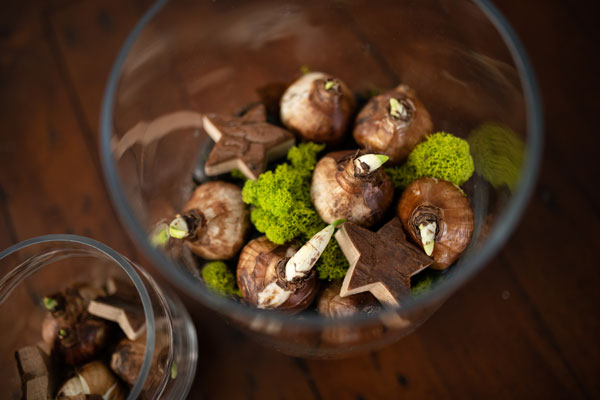
Narcissus
‘Grand Soleil d’Or’ are similar to paperwhites but with vibrant golden-yellow flowers complete with golden trumpets. I would describe the fragrance as gentle and almost fruity and with 10-20 clusters of flowers on each stem. Grow these bulbs in the same way you would paperwhites and enjoy a pop of cheerful colour in the grey days of winter.
Amaryllis
Absolutely spectacular! These tropical bulbs boast humongous flowers on a sturdy stem that emerges from an equally sturdy bulb. They come in colours that range from velvety red, peachy pinks, pure whites, unique greens, and every combination in-between (including stripes of colours).
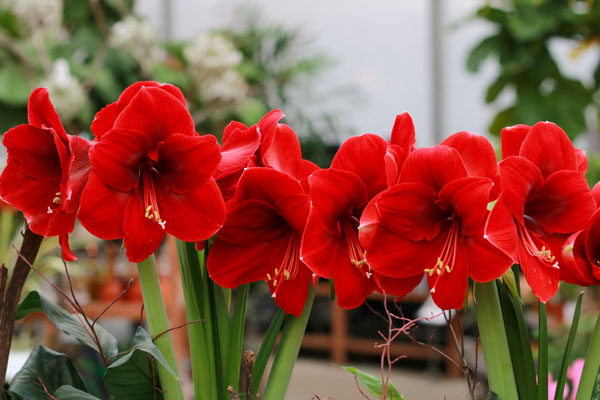
The bulbs themselves are large, like bigger than a softball large and they need to be planted in a container that can handle them. Unlike paperwhites, amaryllis should be planted in a pot with soil. When choosing a container make sure it has drainage holes (soggy soil equals rotten bulbs), and that it isn’t too big, amaryllis like to be slightly root bound. A good guideline is to have a pot that is only 5cm wider in diameter than your bulb. Also make sure it’s sturdy enough to handle the ginormous flowers that will emerge. There is nothing worse than having an amaryllis flower that won’t stay up right. The last thing to know is to make sure that 1/3 of the bulb is actually sitting above the soil surface.
Something a bit new on the scene are waxed amaryllis. These are amaryllis that have been coated in decorative coloured wax which means they don’t need soil or water to bloom. There is literally no care involved, just place it on a flat surface away from any extremes of heat or cold. These free-standing bulbs can be placed anywhere, display it on your desk, tuck it into a holiday display, get creative and enjoy the stunning show.
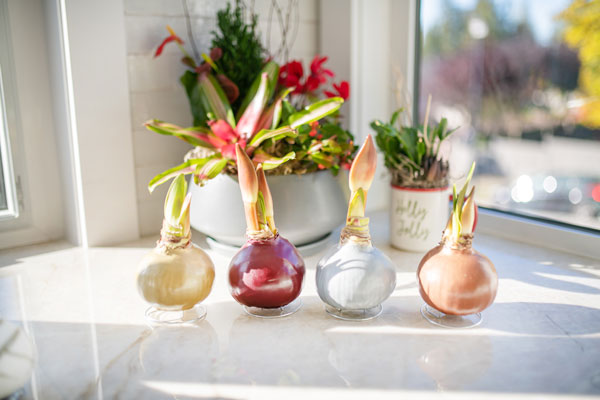
Prepared Hyacinths
If you ever grown hyacinths in your garden then you know the wonderful fragrance, growing them indoors lets you enjoy it on a whole new level. Like paperwhites prepared hyacinths can be grown in either soil or water, and there are even special bulb vases designed for them (check out in store to find one). The same rules apply to these bulbs as to amaryllis and paperwhites, so be careful with choosing your container and water them accordingly.
General Indoor Bulb Care Tips:
-
Choose big firm bulbs and trim off any broken or dead roots
-
Plant them up in your preferred method and then place them in a spot that gets bright indirect light. Not enough light will cause them to grow too “leggy” and they will flop over.
-
If you want the show to last as long as possible then place them in a cool spot, away from both heat registers and cold drafts. Slightly cooler temperatures will slow down their growth.
-
Water lightly when the shoots are emerging and growing (not soggy but not dry)
-
Once flowering starts check the water daily, flowering is thirsty business.
This winter season, fill your home with some fragrance and beauty, courtesy of some indoor blooming bulbs.

